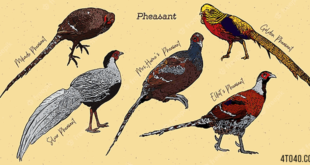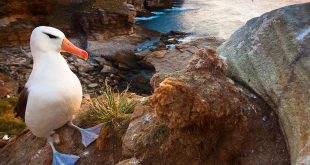 Auklet — An auk is a bird of the family Alcidae in the order Charadriiformes. Auks are superficially similar to penguins due to their black-and-white colours, their upright posture and some of their habits. Nevertheless they are not closely related to penguins, but rather are believed to be an example of moderate convergent evolution.
Auklet — An auk is a bird of the family Alcidae in the order Charadriiformes. Auks are superficially similar to penguins due to their black-and-white colours, their upright posture and some of their habits. Nevertheless they are not closely related to penguins, but rather are believed to be an example of moderate convergent evolution.
Unlike penguins, modern auks can fly (except for the recently extinct Great Auk). They are good swimmers and divers, but their walking appears clumsy. Due to their short wings, auks have to flap their wings very quickly in order to fly. Extant auks range in size from the Least Auklet, at 85g (3oz) and 15cm (6in), to the Thick-billed Murre, at 1kg (2¼ lb) and 45cm (18in).
Auks live on the open sea and only go ashore for breeding, although some species, like the Common Guillemot, spend a great part of the year defending their nesting spot from others.
Several species have different names in Europe and North America. The guillemots of Europe are murres in North America, if they occur in both continents, and the Little Auk becomes the Dovekie.
Some species, such as the Uria guillemots, nest in large colonies on cliff edges; others, like the Cepphus guillemots, breed in small groups on rocky coasts; and the puffins, auklets and some murrelets nest in burrows. All species except the Brachyramphus murrelets are colonial.
Feeding & Ecology
The feeding behaviour of auks is often compared to that of penguins; both groups are wing-propelled pursuit divers. In the region where auks live, their only seabird competition is the cormorants (which dive powered by their strong feet); in areas where the two groups feed on the same prey, the auks tend to feed further offshore.
Although not to the extent of penguins, auks have largely sacrificed flight, and also mobility on land, in exchange for swimming ability; their wings are a compromise between the best possible design for diving and the bare minimum needed for flying. This varies by subfamily, the Uria guillemots (including the Razorbill) and murrelets being the most efficient under the water, whereas the puffins and auklets are better adapted for flying and walking. This reflects the type of prey taken: strong-swimming murres hunt faster schooling fish, whereas auklets take slower moving krill. Time depth recorders on auks have shown that they can dive as deep as 100 m in the case of Uria guillemots, 40 m for the Cepphus guillemots and 30 m for the auklets.
 Kids Portal For Parents India Kids Network
Kids Portal For Parents India Kids Network




